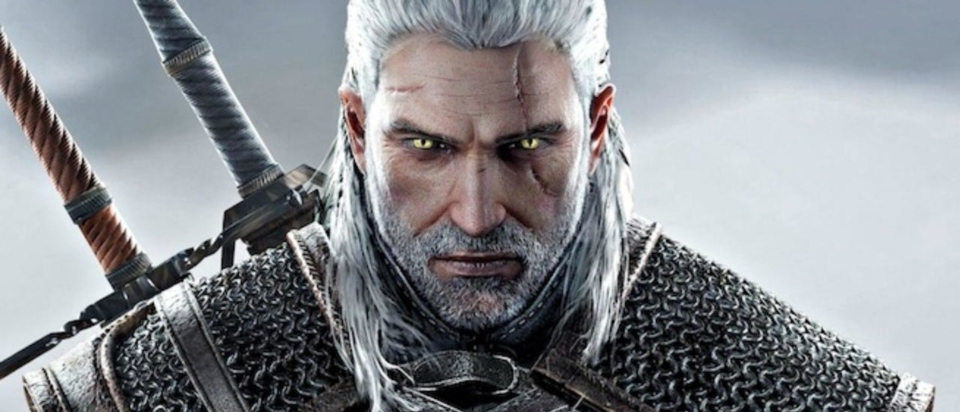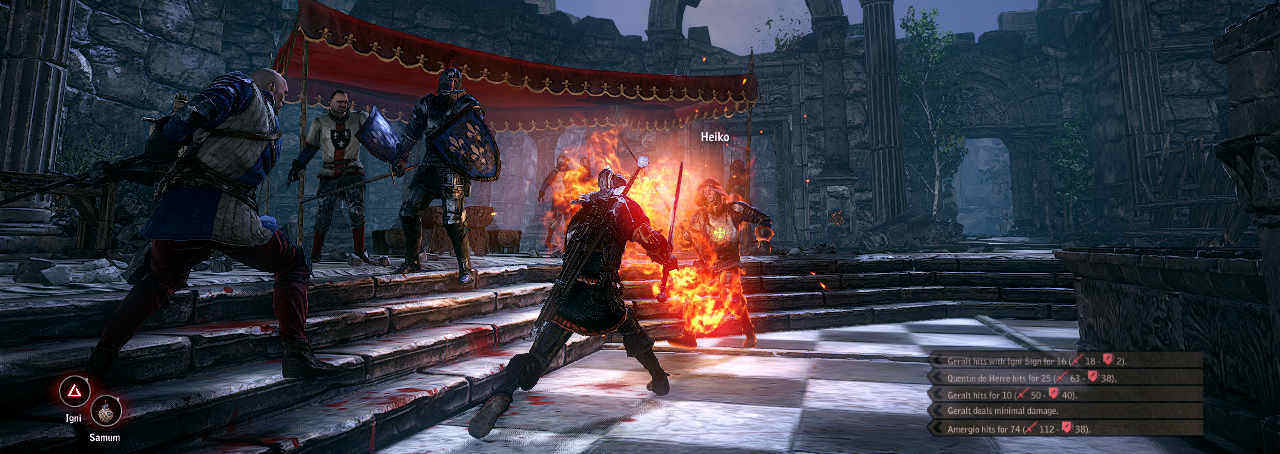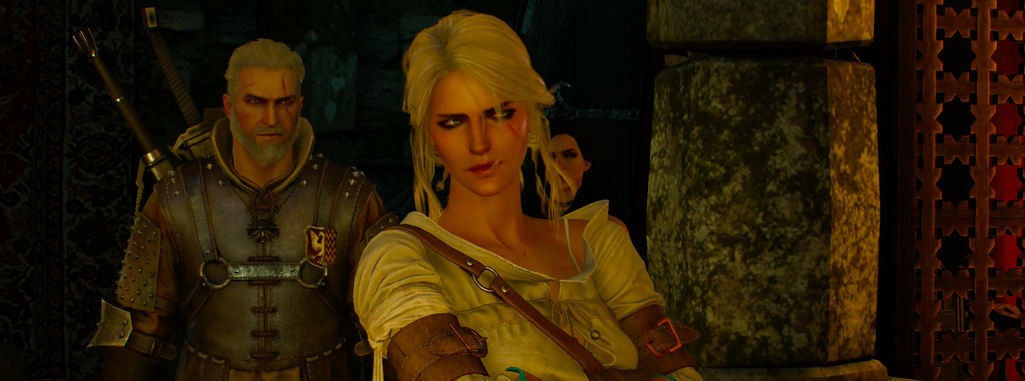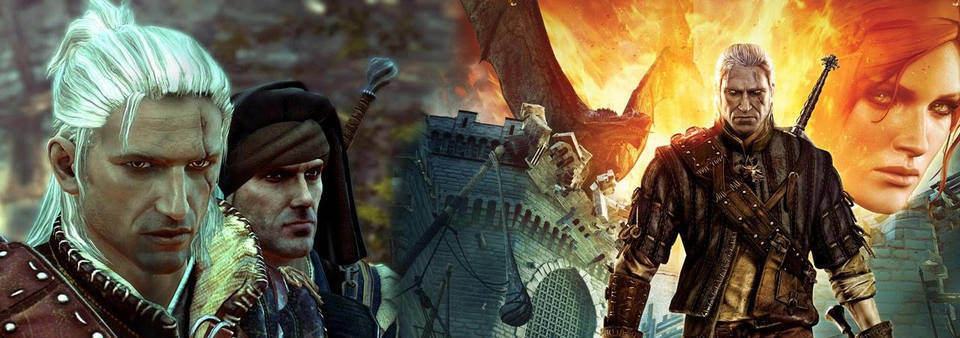The Witcher is one of those videogame franchises that is synonymous with constant – and drastic – improvements across the board, with each new installment being markedly different and better than the game that preceded it.
Based on Polish author Andrzej Sapkowski’s series of fantasy novels and short stories, The Witcher takes place in a unique setting that is predominantly inspired by Slavic and Germanic folklore. It tackled adult themes and social issues that were rarely seen in fantasy – such as racism, prejudice, abuse of power, and realistic depictions of the horrors of war. A big hit in its native Poland, it remained untranslated into other world languages and was consequently mostly unknown outside of Eastern Europe.

This all changed with the release of The Witcher game trilogy.
When The Witcher 1 came out in 2007, few could have predicted that the series would be quite so successful. But by the time that The Witcher 3 was released, it managed to grow into one of the biggest CRPG sensations in gaming history.
Though The Witcher 4 has yet to be formally announced, it’s obvious that CD Projekt Red is eager to return to the world that propelled it to international stardom. Until then, let’s see what made The Witcher 1-3 such beloved games in the first place, and what The Witcher 4 could do in order to stand out from the first three entries.
The Witcher 1 – The Unassuming Beginning
Plans for a Witcher game had been around since at least 1996, when Metropolis Software, another Polish game studio, bought the rights to adapt it from Sapkowski. It was during this time that the term “Witcher” was conceived by game designer Adrian Chmielarz (best known for his work on first-person shooters Painkiller and Bulletstorm). Originally envisioned as an action-adventure with some RPG elements, the project struggled and was eventually abandoned.
Where It All Began
In 2003, CD Projekt Red reached out to Sapkowski and proposed that he give their team another shot at developing a game. CDPR initially offered him a royalties-based deal where he would receive a percentage of every game copy sold. But, believing that the game would be a commercial failure, he instead opted to take a lump-sum payment and sold the rights for roughly $9000 in cash upfront.
This, coupled with the disdain Sapkowski has for adaptations of his works – and video games in general – caused considerable friction between the two parties, and culminated in Sapkowski asking for more than $15 million in additional payments after the Witcher 3 became a smash hit. He and CDPR managed to come to an agreement in February 2019, and the matter seems to be settled.

The Witcher 1 is built using a heavily modified version of the Aurora Engine – the same engine that BioWare built to power their Neverwinter Nights 1. Many new options and modifications were made to it, so TW1 and NWN1 (which came out in 2002) seem like vastly different games.
Geralt of Rivia, the main character of the Witcher trilogy, is now considered one of the most fully-realized and complex video game protagonists to ever grace a gaming monitor, but he almost wasn’t even in the game. Since he was apparently killed at the end of the Witcher novels, and the games take place after them, CDPR toyed around with the idea of having a completely new witcher character be the lead.
Luckily for us, they realized that Geralt was too good of a character and that his melancholy professionalism and big heart were exactly what the game needed to give it a voice and direction.
His “death”, which at first presented a problem, was reworked into a story and gameplay opportunity – using the long-standing gaming cliche of total amnesia. Since Geralt was an accomplished warrior with decades of practical monster hunting experience and extensive experience in warfare, magic, and alchemy (among other things), this made sense – and effectively served to, in gaming terms, depower and revert him back to Level 1.
It also fulfilled another handy ludonarrative function – if Geralt can’t remember anything, then he can ask questions about his world that we, the players, are also ignorant of. This comes across a lot more naturally than in many other games where the character has to be reminded that, for example, their in-game equivalent of Italy exists.
In gameplay terms, TW1 did a great job of introducing all the core concepts and mechanics that would persist throughout the entire trilogy: a professional monster hunter for hire, his two swords – a silver one for monsters and a steel one for humans – magic in the form of five minor (but useful) spells (called signs), collecting ingredients and brewing potions that give Geralt a temporary edge over his opponents, and a fast-paced combat system that takes full advantage of Geralt’s enhanced speed and strength.
But what the series is best known (besides Geralt’s many possible sexual escapades) is the hard moral choices that you have to make. Like in real life, sometimes there is no right choice, only lesser evils. To TW’s credit, it always allows to player to make their own decisions and never berates them for it.
The Witcher: Enhanced Edition
TW1 also introduced another crucial part of CDPR’s business strategy – making an Enhanced Edition of the game (that every player who bought a regular copy would get a free upgrade to). This version includes enhancements to just about every aspect of the game – new content, more animations, greater stability, decreased loading times, expanded dialogues, bug fixes, and more.
This soon caught on in the gaming industry, and today it’s become common practice – especially among indie titles – to release (usually) free Enhanced Editions (or Director’s Cut, Expanded Edition, GOTY, or whatever name the developers choose to release it as).
The EE brought CDPR a lot of fan admiration and cemented the company’s reputation as an indie darling that truly cares about their customers and their consumer rights. This reputation would only increase with their next two games.
The Witcher 2 – The Bridge Between Old & New
Released in 2011, The Witcher 2 – Assassins of Kings was a considerable departure from TW1 in gameplay and presentation. The best way to describe this shift would be – towards the cinematic.
TW2 is like a prototype for TW3 – ideas that are not yet fully formed but show what the series is building up to, what it wants to ultimately become. The differences between AoK and TW1 are apparent as soon as you begin the game, with an emphasis on action-oriented gameplay and storytelling cinematics.

Discarding the isometric perspective of the first game, the sequel moves to a more traditional action game third-person camera angle. This, of course, means that most other parts of the gameplay are also affected by this.
But, the biggest change is definitely the combat.
In TW1, you had several stances that you had to manage when fighting enemies, but because of the overhead perspective, it mostly amounted to clicking and waiting for your cursor to glow which indicated a combo prompt. While it certainly could get challenging, it was also a very passive experience, and it could be argued that it did little to get you to identify with Geralt and his considerable combat prowess. In this regard, the sequel plays more like a Dark Souls game, with our Witcher protagonist parrying, rolling, dodging, and casting signs to weaken his foes.
While the TW1 was no stranger to politics, TW2 is a game that revolves around it. As the title implies, there is an assassin that is targeting kings. After getting framed for the murder of King Foltest, your job is to find out who and why is doing this and to clear your name. Unlike the first game where you could – albeit with some effort – remain neutral, AoK makes it clear that pretending to be above it all is no longer an option.
The Witcher 2: Meaningful Choices
Which brings us to the most interesting part of TW2 and something that we, sadly, still don’t see enough of in AAA games – game content that is mutually exclusive depending on your decisions. AoK takes this to an almost mind-blowing degree and offers an entirely different middle section of the game – a whole chapter – complete with its own divergent set of quests, characters, and areas.
The sheer elegance of CDPR’s writing and intimate understanding of storytelling dos and don’ts is on full display here, and can best be summarized by the two characters that lead you to this choice: Roche, member of the Temerian special forces, and Iorveth, an elven Scoia’tael guerilla fighter. Both men present valid reasons why you should aid them, and gradually – especially Iorveth, who turns out to be a much different person than initially presented as – show different sides of their personalities.
It is a testament to The Witcher’s writing that its characters are almost always multifaceted individuals that resemble real people – you can’t get a clear reading on them until you spend enough time in their company.
Like its predecessor, TW2 was also upgraded with an Enhanced Edition that added over 10GB of content, including a gorgeous new intro.
A modest commercial success that garnered more critical acclaim and brought new fans to the series, few could have foreseen that the next Witcher would be one of the best single-player games of all time.
The Witcher 3 – How Hard Work and Perseverance Pay Off
The Witcher 3 – Wild Hunt is a triumph in more ways than one. The comparisons between it and TW1, a game that came out a mere eight years before it, showcase how much CDPR grew – not just as a company, but also as creators and storytellers. Every element is polished to nigh-perfection – its production values are staggering. The quality of voice acting, character animation, facial expressions, music, all of these rival – and often surpass – even big-budget Hollywood blockbusters.
The culmination of Geralt’s story, it managed to provide another important videogaming milestone – a genuine portrayal of a father-daughter relationship. Where other games too often swerve and end up presenting it as too sweet or thoroughly turbulent, here it’s about two grownups that, though they are caught up in fantastical circumstances of earth-shattering proportions, still manage to find the time to be there for one another.

Geralt’s adopted daughter, Ciri, the secondary protagonist of the game, influences him as much as he does her.
The quality of the writing is evident in every quest and character interaction in the game, no matter how small or seemingly irrelevant. Quests seldom play out as they initially appear to be presented, they are full of amusing twists and subversions of common fantasy tropes. They make the world come alive and include some of the most memorable moments in gaming, such as the much-lauded Bloody Baron storyline.
Frequently topping the best RPG games lists, TW3 is a rare game that manages to blend its open-world sensibilities with a perfectly-executed focus on a story-heavy, character-centered single-player campaign. This attention to detail really paid off, with TW3 selling over 20 million copies as of 2019.
If there are things to criticize about it, it’s that the gameplay is not as tightly designed as its story. Level scaling leads to some unfortunate, and illogical, situations, with seemingly-weak creatures that continue to advance in power across the entire game, and the loot and character progressions systems are likewise unimaginative and MMO-ish in design.
Still, these are minor nitpicks that do little to diminish TW3’s greatness and accomplishments, and they can easily be taken care of with a couple of choice mods. Unlike the first two games, TW3 did not get an Enhanced Edition version of the game – simply a GOTY (game of the year) edition with all the various DLCs (the two big, expansion-level paid ones, and every smaller free one) bundled together.
Which brings us to today and The Witcher 4.
The Witcher 4 – What (Little) We Know
To start with, The Witcher 4 almost certainly won’t be called that. CDPR has stated numerous times TW1-3 is one long, continuous story – Geralt’s story – and that his story is, for better or worse (depending on the choices you made in Wild Hunt) now over.
So, when TW4 does get formally announced, it will almost certainly be under a different name, one without a numeral. Another important thing to note is that Geralt won’t be the protagonist this time. Depending on when the game takes place (if, for example, it is a prequel), Geralt could potentially make some sort of appearance, but playing as him will most likely not be an option.
The Witcher universe has an extensive history, so it would be easy to imagine a game that takes place several centuries prior to the events from TW trilogy. In the distant past, all the Witcher schools were still thriving, so this could even serve as a sort of class selection from traditional RPGs – a member of the School of the Viper specializes in poisons and small blades suited for assassination work, while someone belonging to the School of the Bear is clad in heavy armor and uses brute strength to overwhelm their opponents.

They could even start the game in different areas and have mutually exclusive quests and other game content depending on this choice. The gameplay and role-playing possibilities are endless.
While CD Projekt is busy right now getting Cyberpunk 2077 ready for release in early 2020, a moderator on their forums confirmed that they are planning another AAA release by 2021. Here is the translation of that thread. That other game could very well be a new Witcher game in some shape or form. Adam Kiciński, CDPR President and CEO, confirmed how much the company values The Witcher as an IP. He said: “This does not mean, of course, that we will leave the world of The Witcher. The Witcher is one of two franchises on which to build the future activities of the company. Today, unfortunately, I can not reveal anything more.”
Final Words
If CDPR really is working on another TW game, they aren’t confirming it just yet. This makes sense from a marketing standpoint – they want all the focus on their upcoming Cyberpunk 2077 game and can’t risk anything overshadowing it.
A new Witcher game is just a matter of time, but CDPR is notorious for working at a meticulously slow tempo and only releasing a game when they are completely satisfied with it. So far, they have released a new Witcher game every four years – with CP2077 looking to break that tradition with five years between it and The Witcher 3. But The Witcher 4 – in one way or another – is an inevitability. The franchise is too big and beloved by millions of fans all over the world to not get another entry in the series.
Until then, we can always replay the original Witcher trilogy. They are games that were specifically designed to be replayed and reward their players with entirely new content and different outcomes – sometimes dozens of them – depending on your choices and playstyles.
And let’s not forget the upcoming Netflix TV show adaptation starring Henry Cavill as Geralt of Rivia. If it does well enough and proves to be popular among the massive Game of Thrones crowd (that are hankering for a new show to fill the gap left after GoT’s conclusion).
The series could speed up The Witcher 4’s production.
Here’s to hoping it’s both a fun show that’s faithful to the original books and a good incentive to the fine folks over at CDPR that the world deserves and craves another excellent Witcher game.